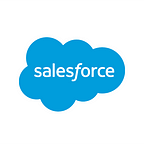5 Retail Transformations that Marketers Must Understand
By Heike Young
Big changes in ecommerce, mobile payment, social customer service, and customer experience have led retailers to a scenario where much is unknown and much is undergoing disruption. What do we actually know about the future of retail vs. what’s pure conjecture?
Accenture and Salesforce recently published the report Retail Organizations: The Next Stage of Transformation. While the research applies most to retailers, Rob emphasizes that every industry can take note of these stages of transformation and apply them to their own businesses.
On this week’s episode of the Marketing Cloudcast — the marketing podcast from Salesforce — we’re discussing the customer experience, the transformation of ecommerce, and the disruption of retail networks. Joel and I interview Rob Garf, Vice President of Industry Strategy and Insights for Salesforce Commerce Cloud, is an expert in this research and all things retail marketing.
If you’re not yet a subscriber, check out the Marketing Cloudcast on iTunes, Google Play Music, or Stitcher.
Take a listen here:
You should subscribe for the full episode, but here are a few takeaways from our conversation with Rob Garf.
1. The E is gone. It’s just commerce.
When asked about the current state of ecommerce, Rob is quick to point out that ecommerce is not really a designation we need anymore. “It’s just commerce. It’s retail, it’s shopping.”
As he explains, when it comes to disruption, “Upstarts are really putting pressure on the traditional brick and mortar retail organizations to think about digital and how to infuse digital across the entire shopping journey.”
When creating the report, Rob says, “We wanted to rip deep into the organizational structure, understand the fabric of their DNA, and how it needs to change over time. We interviewed retail executives across the globe. We wanted to understand what’s keeping them up at night and what’s happening with their organization that needs to change.”
So, what’s the ultimate goal of the research? “We wanted to look at retailers that had been struggling at this for a while and create a blueprint forward,” says Rob.
2. Having a great product is no longer enough.
“Since the beginning of time, retail was always about product. The merchandiser would build it, and the customer would come. Because of this, retailers became very product-centric,” says Rob. However, retailers need to make the move to becoming more network-centric.
“In order to compete in the future and become customer-centric, retailers really need to take a network approach. This means looking outside their four walls to get the services, the expertise, whatever else is needed to create an experience,” says Rob.
Rob points out, “Retail organizations are going to look completely different in the near future. They need to be more open and be adaptive networks that orchestrate the experience from various partners.”
It won’t just be about selling a product. “Retail brands are going to be stewards of the customer and deliver that experience,” says Rob.
3. The biggest difference between leaders and laggards is data intelligence.
The survey identified six characteristics for retail survival: “The first one is vision. The vision needs to be focused purely on the customer. Not just driving product, but driving experiences,” says Rob.
“The second is culture. Really leveraging a test-and-learn culture. This is followed by market insights: taking relevant market insights and using them to shape the future of the business. Data intelligence, innovation, and agility round out the six.”
He continues, “The survey showed that the top two most important characteristics are market insight and innovation.”
In a list, here are those six characteristics for retailers to survive in our transforming world:
- Vision
- Culture
- Market insights
- Data intelligence
- Innovation
- Agility
4. 70% of respondents said that major change is required to meet customers’ expectations.
Do most retailers grasp this? As Rob explains, “They’re just scratching the surface. It’s one thing to recognize that change is required. It’s another to make that change.”
One data point from the report shows that 70% of respondents say that material or significant organizational change is required to effectively satisfy customer demands across increasingly complex and expansive touchpoints.
“The characteristic everyone agreed will need the most change is culture,” says Rob. Too many retailers are still stuck in that brand-centric mentality of “if we didn’t build it, it’s not good enough for our customers.” Rob says there needs to be a shift in mentality “to facilitate enterprise collaboration, across marketing, digital, and store, then go beyond that and do the collaboration in the network world.”
In other words, as Rob explains, “retailers really need to cut deep into the fabric and sew themselves back together.”
5. Retail has become democratized, so go wherever your consumers are.
You can’t do CX well without making it the focal point of your organization. When asked what brands should keep in mind if they want to succeed in ecommerce, Rob says, “The world of retail has become democratized. It’s not just about the customer on-property transaction that is taking place, but pushing the brand to wherever the consumers are.”
Retailers are now pushing their brand into the social sphere: social networks, messaging platforms, mobile apps. “That’s where the marketing is taking place. The buy button is being pushed into social,” says Rob.
One of the key benefits of this transformation? “It’s cutting down on a lot of the noise between where the customer has been inspired and purchase,” says Rob.
We talked about much more with Rob (@RetailRobGarf). Get the complete scoop on the transformation of ecommerce in this episode of the Marketing Cloudcast.
Join the thousands of smart marketers who already subscribe on iTunes, Google Play Music, and Stitcher.
New to podcast subscriptions in iTunes? Search for “Marketing Cloudcast” in the iTunes Store and hit Subscribe, as shown below.
Tweet @youngheike with marketing questions or topics you’d like to see covered next on the Marketing Cloudcast.
Originally published at www.salesforce.com.
